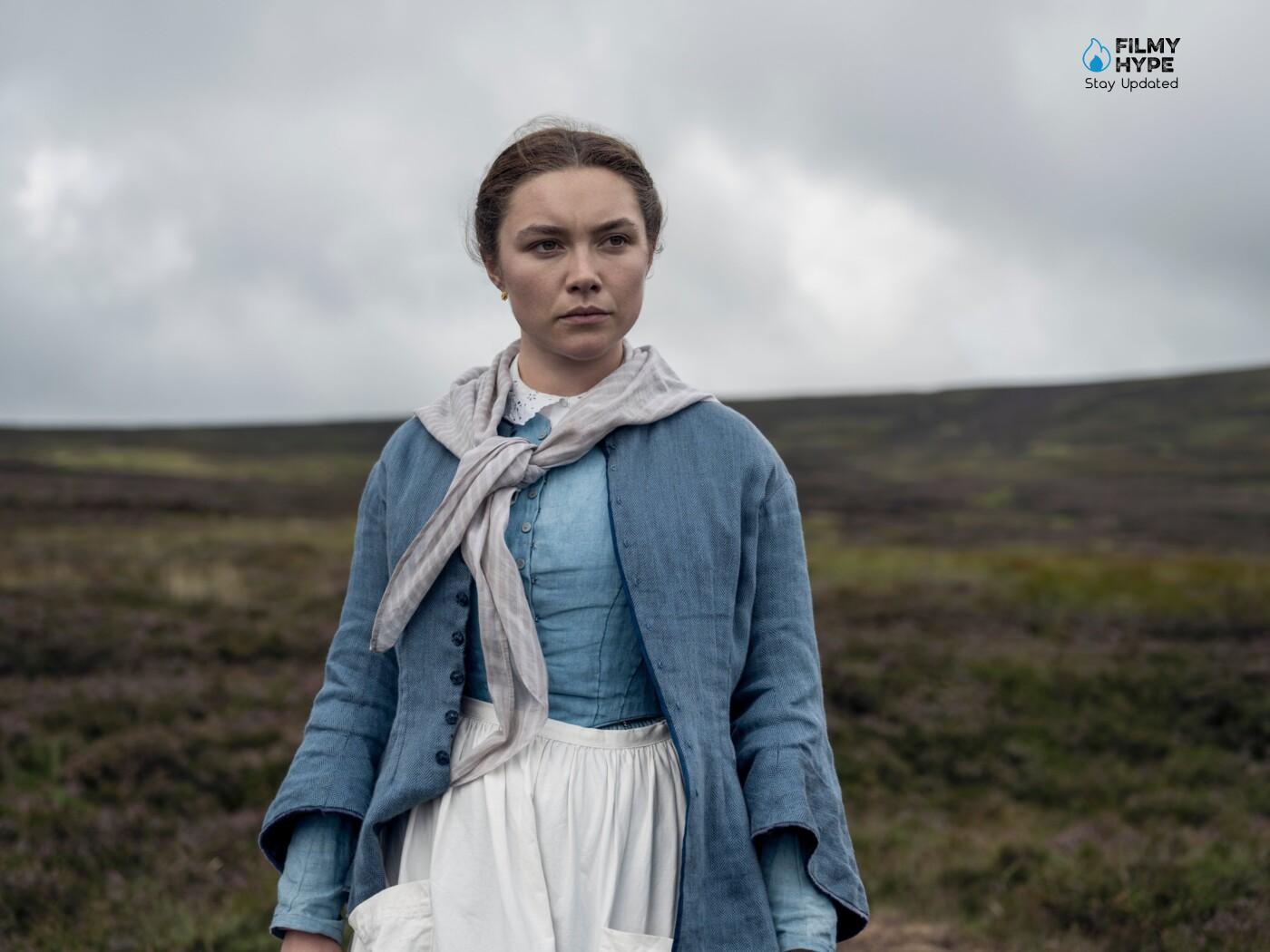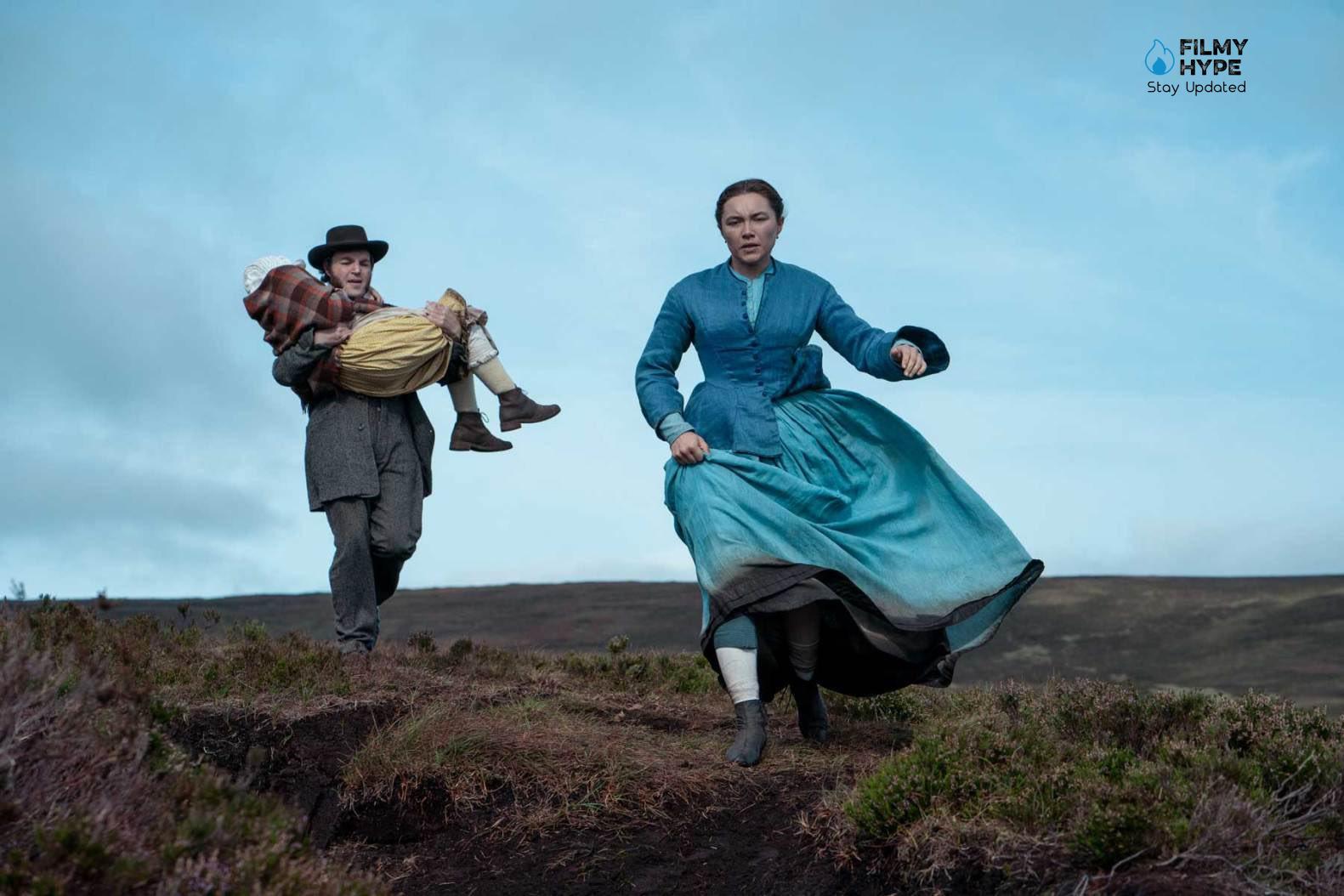The Wonder Ending Explained: What Had Happened Between Anna and Her Brother? Who Fed Anna? How Does Lib Get Anna To Run Away?
First passed through the Toronto International Film Festival, where it convinced the critics, The Wonder, a film directed by Sebastián Lelio and based on the novel of the same name by Emma Donoghue, is now available on Netflix. As we explained to you in our review, The Wonder, the opera, which stars a splendid Florence Pugh, is a drama that plays with the atmosphere of a thriller to draw us into a dark and intriguing mystery.
Lib is an English nurse who is called to a remote corner of Ireland to observe a miraculous fact: a little girl, Anna, seems to be in excellent health despite not eating for more than four months. Is there someone secretly feeding it or is it – as everyone seems to believe – divine intervention? Lib initially fails to find a rational explanation for the mystery, and she slowly seems to convince herself that some supernatural force keeps the child alive. However, preventing her from contacting her parents, she will soon realize that the little girl is starting to deteriorate, and that terrible secret are hidden behind her apparent “Prodigy”. Below, focusing on the concluding portion of the film with Florence Pugh, we will give you our explanation of the ending of The Wonder.
The Wonder: Plot Summary
Set in 1862, Lib Wright (Florence Pugh) is a nurse trained by pioneer Florence Nightingale, with the harsh experience of the battlefields of the Crimean War behind her. The woman, who is still struggling with the pain of a bereavement that marked her existence, is hired for a very particular job: she will have to travel to Ireland marked by famine to observe what everyone defines as a “Prodigy”. An eleven-year-old girl, Anna (Kíla Lord Cassidy), hasn’t eaten for four months: the little girl, who claims to feed only on divine love, is perfectly healthy, and no one can explain how this is possible.
A committee made up of the local priest and doctor and other representatives of the small community have decided that a nurse and a nun will have to observe the little girl, taking turns during the hours of the day and night, trying to discover the mystery behind his miraculous fasting. Many are convinced that Anne has been touched by divine power and that she may be the first saint that the remote Irish region has seen for centuries. Lib will find herself observing the little girl for many days, shocked by her apparent ability to survive without feeding. Over time, however, getting to know both her and her family better, she will realize that behind this apparent miracle dark secrets are hidden.

The screenplay, signed in part by Lelio himself, is based on the novel of the same name by Emma Donoghue, a Canadian writer of Irish origin who has already brought one of her works to the cinema through Room, the film that earned Brie Larson an Oscar. This time we are not in contemporary America, but in Ireland in the second half of the nineteenth century. Lib Wright, an English nurse who cut her teeth under Florence Nightingale, is sent to investigate an alleged miracle: the case of Anna O’Donnell, an eleven-year-old girl who is still alive despite having not eaten for four months. This has transformed the community into a destination for religious tourism, and Lib must monitor Anna together with a nun to understand the origin of the strange phenomenon. The London journalist William Byrne is also interested in the matter and tries to get information from the nurse.
The Wonder Ending Explained: Who Fed Anna?
At one point in the film, Lib has the intuition of separating Anna from her parents, who prayed with her both in the morning as soon as she woke up and before going to sleep, between hugs and affectionate kisses. From that moment, the little one begins to feel bad, and it is as if all of a sudden, her self-imposed fasting begins to weigh on her body, which makes her gradually weaker. Lib understands that the change in the physical condition of the little girl, who had always said she fed on “Manna from heaven”, depended on the forced distance from her parents, who somehow passed her some food, even if she hadn’t understood exactly how they did.
Suddenly, however, the expert nurse realizes how they managed to keep her strength: the mother both in the morning and the evening before the little one went to bed, and during the daily prayers, passed her chewed food through her kisses. The woman had convinced the little girl that hers was the Manna from heaven that the Lord sent her to feed her and make her survive, allowing her to continue the penance she had begun for her missing brother.
What Had Happened Between Anna and Her Brother?
But why had Anna decided to fast after her brother’s death? She answers that the little girl was crushed by a sense of guilt for having been forced by her brother into an incestuous relationship. Her boyfriend, older than her, had forced her – since she was nine years old – to have sexual relations with him, convincing her that this was an acceptable form of love even between blood relatives.
Anna was then certain, probably confused by her affection for her brother and by her emotions that she was not yet old enough to truly understand, to reciprocate. For this reason, when the boy falls ill and then dies, the little girl is convinced that it is the fault of what the two did together, despised by God and that for this reason, both the responsibility for his death falls on her shoulders as well as the task to save his soul from the fires of hell. Her mother, who had discovered them, confirms Anna’s beliefs, stating that it was her fault that her eldest son had died.
Save Yourself From Hell
How to save him from eternal damnation? With fasting and prayer. To free her brother’s soul from hell, Anna imposes herself not to eat and repeats the same prayer 33 times a day, a sacred number which refers to the years of Christ. The only food she was initially willing to accept was the one passed from her mother through her kisses, convinced that she was the Manna sent by God.
When the mystery is discovered by Lib, Anna is not, however, distracted from her intent and continues with the fast, sure that it is the only way to save her brother from hell, a terrible punishment for which she considers herself responsible. Her mother, then, cornered by Lib of hers who begs her to feed her daughter again, refuses to save her, convinced in her turn that Anna’s sacrifice is necessary to save both her soul and that of her deceased brother. The practice of prolonged fasting was attributed to some of the best-known saints, and for this reason for Anna and her family – extremely devoted and at the mercy of a faith that in Lib’s eyes has nothing rational – it is the only way to free someone from condemnation in hell.
How Does Lib Get Anna to Run Away?
Difficult to scratch such deeply rooted beliefs, the only way Lib finds to save Anna is to convince her that she will die and be reborn as another person, Nan. Someone who is no longer Anna, and who therefore no longer carries the sense of guilt for what happened and the responsibility of saving the soul of a deceased brother on his shoulders. Believing that she died and rose again – like Jesus, an extraordinary event but one that is familiar to the little girl, which is part of her “baggage” of beliefs – Anna is sure that she has fulfilled her task and that she has saved the damned soul of his brother.
For Lib, setting fire to the house, as well as an effective method to take the child away without being discovered, is also a symbolic way to cut Anna’s ties with her past, to ensure that staying alive, with her, is only Nan. How many saints are there whose bodies have been burned by flames? Lib in turn harnesses the power of sacred stories, letting the men of the village make a shrine out of the remains of Anna’s house. Ultimately none of them cared about the fate of the little girl, who was seen only for what she could be: a saint, a divine instrument, a symbol of self-denial and sacrifice.
A New Life Together
Only for Lib is it really important to save Anna only the woman sees her for who she is: a child at the mercy of other people’s beliefs (her brother, her parents, her community), who manipulated her and it affected life. Therefore Lib finally manages to save her because she was the only one who cared about protecting Anna, not her soul. Lib, Nan and William (friend/lover of the nurse), decide to change their identities and run away to New Zealand, where no one knows them, and they will be able to start over from scratch. During the first meal on the ship that is finally taking them to freedom, Nan no longer refuses food, thus confirming that she has left her old life behind.

An Anti-Religious Message?
Superficially, one could read Sebastián Lelio’s film as a harsh criticism of religion. In reality, the director and the author of the novel on which the film is based, Emma Donoghue, want to point the finger at the extremisms to which religion – but can lead. Among the “supporters” of Anna’s fast, there is also the local doctor, who is not a man of faith but is convinced that the little girl has found the source of her eternal youth. Carried away by this certainty of his – certain that he had made a “revolutionary discovery” – he is unable to see the situation rationally, actually hurting the child because it does not prevent her from letting herself die.
The fact that it is not a direct criticism of religion – only of extremism! – It is also underlined by the last meeting between Lib and his nun with whom he shared little Anna’s observation. The woman tells her that she saw Anna run away with William, and therefore knows what the nurse did, but makes her understand that she will not say anything because the important thing for her is that the child can live a happy life. The nun, who as an emissary of the Catholic creed should represent, in a world where faith is so important, the maximum of closed-mindedness and fanaticism, is instead the only one who, apart from Lib, really cares about the fate of the little girl.
Is The Film Based On A True Story?
The film The Wonder, although not specifically taken from a true story, is inspired by a rather common phenomenon in the Victorian era (the period in which the story is set), namely that of the “fasting girls“. These were young women, mostly preteens, who claimed they could survive for months without food thanks to divine intervention. Many cases of “girls fasting” have been documented, the most famous of which is that of the young Welsh girl Sarah Jacob, who died of starvation in 1869. She too, like other young women, perished after being forced to observe fasting ( doctors and nurses) and was no longer able to have secret access to food (although it was never discovered whether it was her family who fed her or it was her when no one saw her). Even Sarah, like the protagonist of the film, was seen as a saint, as if her miraculous fasting were divine work, and for this, she attracted many pilgrims and faithful.
The Power Of Stories
At the heart of The Wonder, we find the power of stories: this is highlighted both at the beginning and at the end of the film, when the character Kitty, played by Niamh Algar, communicates directly with the viewer. In this way, the director provides the viewer with the key to understanding the meaning of the film, which is a story about the intrinsic power that stories – and therefore beliefs, and faith – can exert on people.
Anna, for example, lets herself be manipulated by her brother to establish a sexual relationship with him “She told me as if it were a fairy tale“, says the little girl as she confesses to Lib what happened – and her mother convinced her that the nourishment she gave her through her mouth was Godsend, but also that fasting was necessary to save her and her deceased brother from hellish damnation.
Even Lib, however, is capable of exploiting the power of stories to her advantage: as we said she manages to convince Anna that she died and then rose again, as happened to Jesus. The woman understands that to save Anna, she must use the same approach that everyone else has used: to come up with a story that is convincing enough. All the people who surround the little girl, from her family to the local doctor, from the priest to the pillars of the small Irish community, are so obsessed with their beliefs that they cannot see reality, even though Lib tries in every way to show it to them (emblematic the scene where she reveals to the committee how Anna fed, a simple and rational explanation, but no one believes her). The fantasy that Anna could be a young saint is much more attractive and advantageous than the sad reality, namely that there is nothing divine in her fasting, but rather that the little girl risks dying. To save Anna, Lib must then use the same “weapons” as these people, harnessing the beliefs and faith that are killing Anna to help her.






